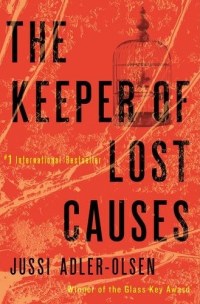Men in the Making by Bruce Machart
 Thursday, September 1, 2011 at 3:14PM
Thursday, September 1, 2011 at 3:14PM 
Published by Houghton Mifflin Harcourt on October 25, 2011
The titular Men in the Making are men learning to accept responsibility and to value their friends and family. Most of them have dirt under their fingernails: they work in sawmills; they farm; they clean the messes made by hospital patients. They live in Texas and Arkansas and Oklahoma. They drink Lone Star and listen to Conway Twitty and Willie Nelson on the jukebox. They spank their children without worrying whether it's politically correct.
Most of the men in Bruce Machart's collection of ten stories are enduring growing pains. They are physically or emotionally scarred. Their wives and mothers have died or abandoned them. They're often longing for something they can't identify. The stories are slices of lives that have already been badly sliced.
My favorite of the ten, "What You're Walking Around Without," is about a man who, after falling from an oil rig, is "stricken with purposeless afflictions, with a lazy eye and a bum leg and a nervous tic, with a hand he can't hold steady enough to touch a woman the way a woman wants to be touched" -- a man who curses himself for resisting his pre-accident girlfriend's pleas to take her virginity, who saved himself for marriage (and protected his girlfriend's virtue) because he believed that to be God's desire. Marriage to the girlfriend is no longer an option (she wants a "whole man"); he now deems himself unfit to marry any woman. As his thoughts return to those long nights of passionate embraces, he cannot understand why his piety was rewarded with pain, why he was left to live. After years of brooding about "a world all too willing to inflict wounds at random," a few words spoken by a neighborhood boy start him on a path toward acceptance of his fate and a better understanding of the life he must live.
Another standout is "Among the Living Amidst the Trees," a story that tells of a distressing day in a man's life. A gruesome race-related murder on Huff Creek Road brings a news crew into a tavern in the mistaken belief that it is a hangout for skinheads. They spark anger that leads to a moment of violence, provoked less by the news crew than by all the pain and anxiety that has engulfed the man. Its cathartic release leads him to a deeper appreciation of his wife.
At his best, Machart reminds me of Donald Ray Pollock and Tim O'Brien. When he's not on his game, however, Machart is like a tennis player who serves with power but lacks finesse. He scores points but in the absence of a complete game he can't compete with the best players. Machart doesn't write with the lightning-flash intensity of observation that characterizes Pollock's work, nor does he have O'Brien's consistent ability to make me feel the depth of a wounded man's soul. A couple of Machart's stories have an insubstantial feel; one reads like the floundering work of a new writer.
Machart's characters are the opposite of Pollock's. His men are decent, sometimes admirable. They try to behave honorably, following codes instilled by the generations of hardworking men who preceded them. They tend to avoid violence and to feel shame when violence overwhelms them. They are humble men trying to make the best of uncertain lives. While the stories aren't consistently first-rate, the best are gems, as are the men he's created.
RECOMMENDED



